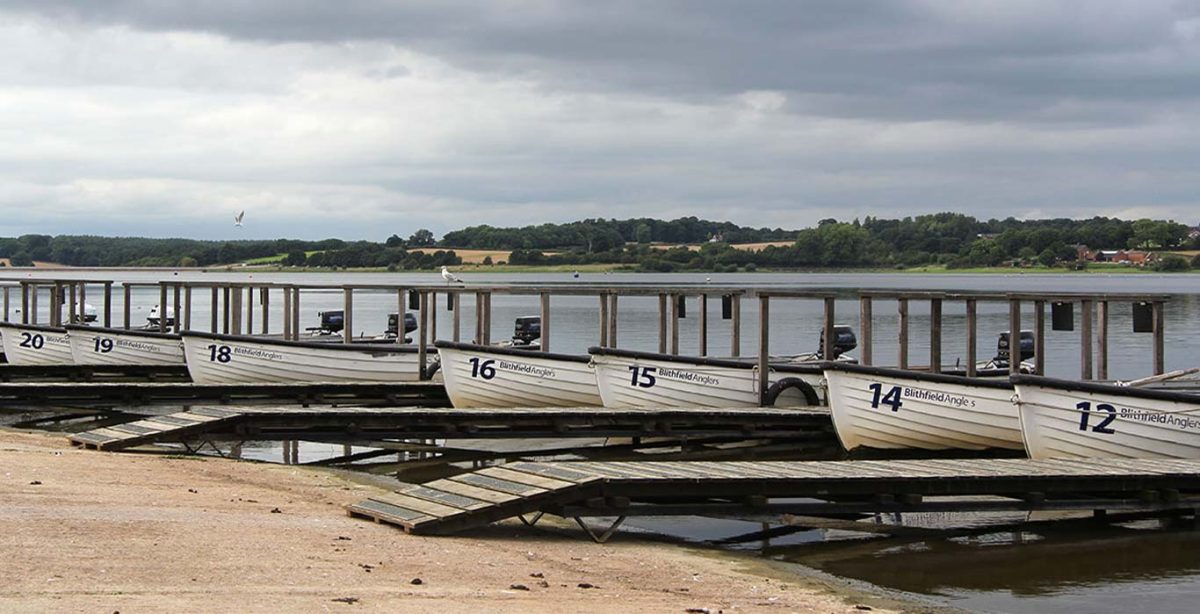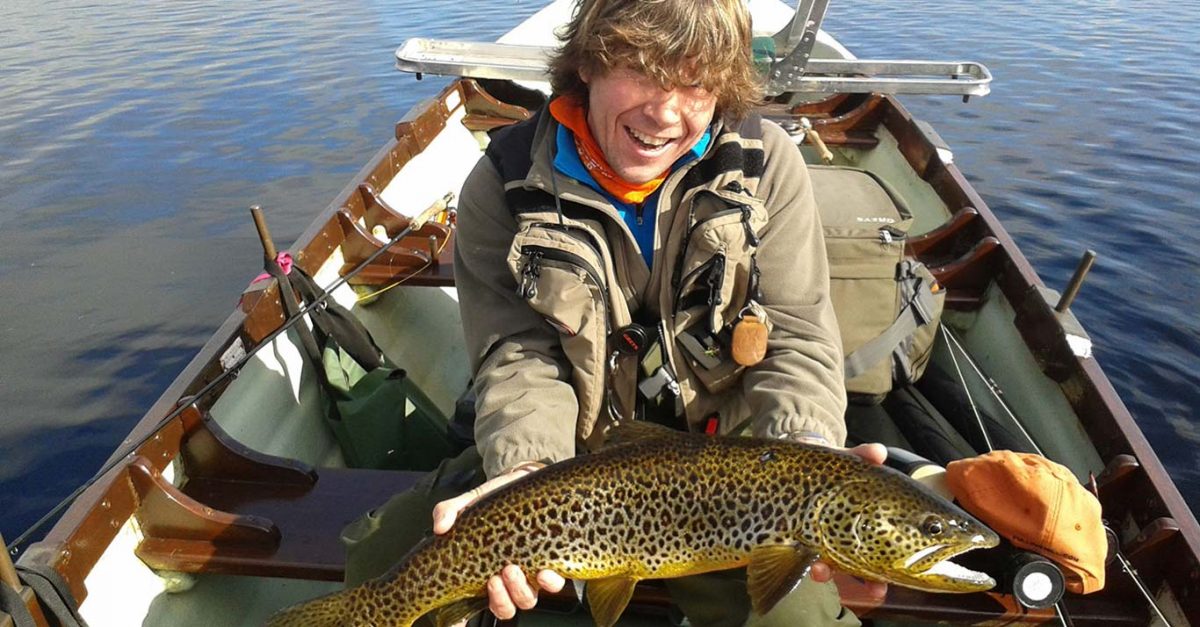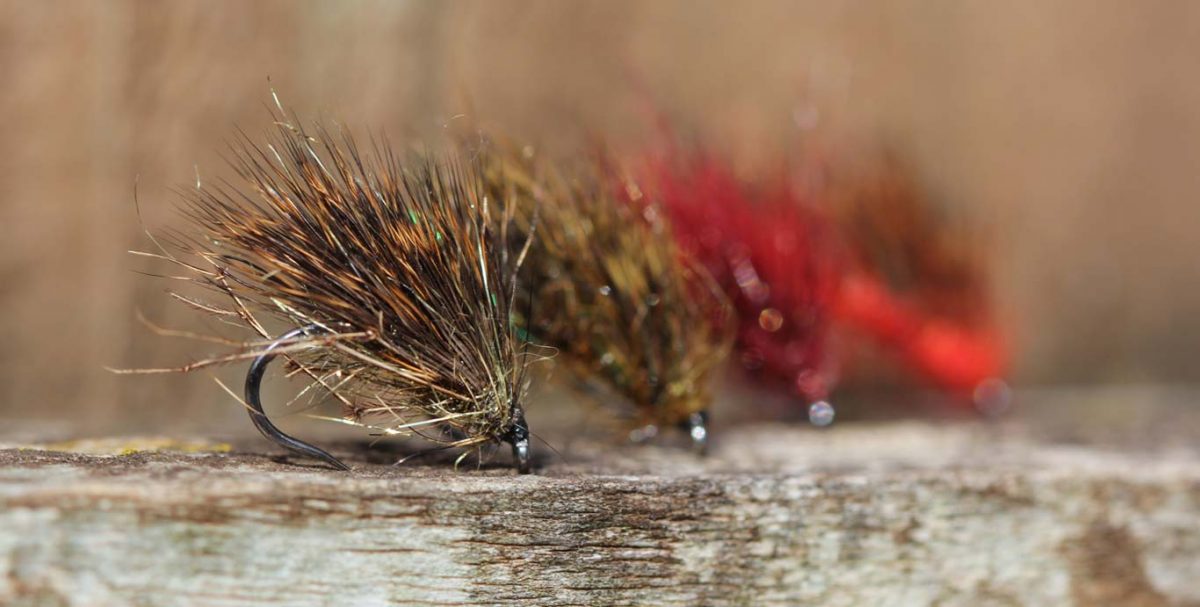Armchair Fly Fishing
Destination fishing, big fish, exotic locations are on most fly anglers bucket list’s. England International Steve Smalley had float tubing on his and one year in shares the magic of armchair fly fishing…
WORDS: RICHARD GARBETT
PHOTOS: RICHARD GARBETT
A s fly anglers, many of us aspire to visit exotic and tropical destinations in search of a range of different species, wild brown trout fishing in New Zealand or even tiger fish in Tanzania the list of opportunities nowadays is endless. I guess there are many others on fly angler’s bucket lists but what about float tubing in the UK? I’m not sure this will be on everyone’s wish list… but it should be. I am only a relatively recent convert and I have to say I am well and truly hooked. The float tube gives the angler unlimited access to water that would usually be inaccessible, but it allows you to target fish that always just seem to be out of reach! Whether it’s your local small stillwater or a small wild hill tarn or even one of our larger reservoirs the opportunities are there. The sense of freedom is unparalleled as you are able to get in to every nook and cranny, and for a reasonable outlay you too could be enjoying the freedom that a float tube brings.
Trouble Free Tubing
Health and safety is part and parcel of everyday life these days and float tubing is no different. A little care and planning is all that’s required for a trouble free float tube trip. Checking the weather forecast before your planned trip is a must though. It’s easy to get into difficulty in high winds or prolonged spells of heavy rain or a thunder storm so its best not put yourself in that position in the first place. There’s no pleasure fishing in these conditions anyway! Tell someone where you’re going if you’re on your own and roughly what time you expect to be home. A good quality life jacket is a must and should be worn at all times. Take your mobile phone with you but be careful not to get it wet!

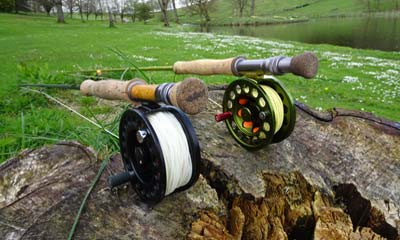
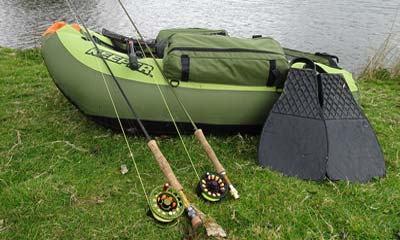
Float tubes pack down well for easy transport and storage. I use the Vision Keeper ISO float tube. It’s functional, the foam filled seat is comfortable. The pockets are big enough to take everything you need for a day a float. Organisation is key though and having all your kit tidy is important. Keeping it to the bare minimum is essential as there are no second chances if something is dropped, reels, snips, forceps are all easy to lose. Nets and spare rods need to be clipped on. Most float tubes have decent sized pockets for storage. I have used some foam to keep everything safe and to hand, a place for everything and everything in its place as the saying goes does make life on the water a lot easier. When it comes to inflating your tube make sure the bladders position correctly within the tube as you’re inflating, a manual air pump from any good outdoor shop is all you need. I prefer to use breathable waders and Vision thermal pants; these keep me warm all year round. One final tip before you go afloat…make sure you use the toilet facilities. There’s nothing worse than paddling out only to come back ten minutes nature to answer the call of nature!
The low profile that you have on the water opens up a completely different perspective for the angler.
A Completely Different Perspective
There are many advantages to the float tube, not least stealth. Unlike a boat your approach is virtually noise free; no noisy engine causing a disturbance or the dreaded anchor been thrown over the side with the chain rattling against the side of the boat. Those sometimes frustrating swirly winds are no longer a problem controlling your position is easy whether you’re drifting or trying to hold station. The trout don’t seem to see the presence of an angler and float tube as threat, the low profile that you have on the water opens up a completely different perspective for the angler. I have regularly seen fish rising within a rod length of the tube sometimes even coming so close they make you jump and give themselves a fright. This also enables the angler to study at close quarters what and how the fish are feeding on, something you are not readily able to see even from a boat, whether it be emerging buzzers or trout taking flies off the surface, you couldn’t be any closer. I have learned a lot by just sitting and watching then adjusting tactics to suite. There is no need to be able to cast to the horizon in fact it’s quite the opposite. Short precise casting giving better presentation is all that’s needed.
Tackle For Tube Trout
I normally take two rods with me, one will be set for nymphs and the other for dries. I use the Vision XO 10ft 7-wt for my nymph set up. An 18ft leader is manageable and will allow you to net fish comfortably. I attach two droppers the first at 6ft and the other at 12 ft. Some people find netting fish in the float tube problematic. To give me more reach and make netting fish easier I use a customised landing net handle and attach a rubber meshed pan net to it rather than using a short handle river style pan net. For my dry fly set up I use the Vision Onki 10ft 6–wt. On this rod I use a 15ft leader with one dropper attached at 7ft. I will on occasion use a three fly set up for the dries.
I use Barnsfold Waters near Longridge in Lancashire which is run by Frank Casson and his son Richard, there are two lakes Barns and Beacon, both are approximately 12 acres in size, and are perfect for float tubing. I also use my local water Coniston Hall Hotel Lake which offers some quality fly fishing on the tube.
Top Of The Water Tactics
I like to start with the nymph and midge tip set up. Fishing nymphs and smaller more imitative flies from a tube is always a good tactic. A lot of anglers tend to fish bigger weighted lures, but the fish soon wise up to these offerings. I tie on a size 10 black buzzer on the point, a red holographic Diawl Bach in the middle and a black UV Cruncher on the top dropper. I tend to systematically cover the water in the float tube aiming to locate the fish holding areas. At Barnsfold both lakes have distinct corners and these areas always hold fish. When nymphing from a tube I like to cast across the wind letting the flies swing round whilst keeping in touch with a slow figure of eight retrieve. This is a method I also employ when bank fishing with great success. Today there are odd fish moving across the lake and with a hatch of small buzzer coming off I decide to bring my flies up in the water. I take the black buzzer off the point and replace it with a FNF Candy FAB. The change in tactic is instant with a rainbow taking the Candy FAB on the point. Several more fish follow mainly to the FAB on the point. I change the nymphs, but only down to size 12’s and soon I start to get more fish on these with the takes resulting in good solid hook ups.
You are closer to the fish and the fight you get from a hooked trout in a tube is second to none.

Float tubing is very relaxing with many tubers referring to the fact it’s like being sat in an armchair! It is that comfortable that after my first trip in a float tube I wrote on my social media page “that’s the most enjoyable fly fishing experience I have had in ages”. For me it’s great fun, it gives a completely different perspective on the waters we fish. You are closer to the fish and the fight you get from a hooked trout in a tube is second to none. So if you haven’t already done so give it a go. It will give you a new insight to the waters we fish.
Further Information
Not all fisheries allow float tubing for health and safety reasons and due to the possible spread of invasive species so please check first.
The British Float Tube Association have a great website with lots of information and hint and tips on how to get started. They offer advice on kit and fisheries that welcome float tubes. Check out their website at www.bfta.org.uk



